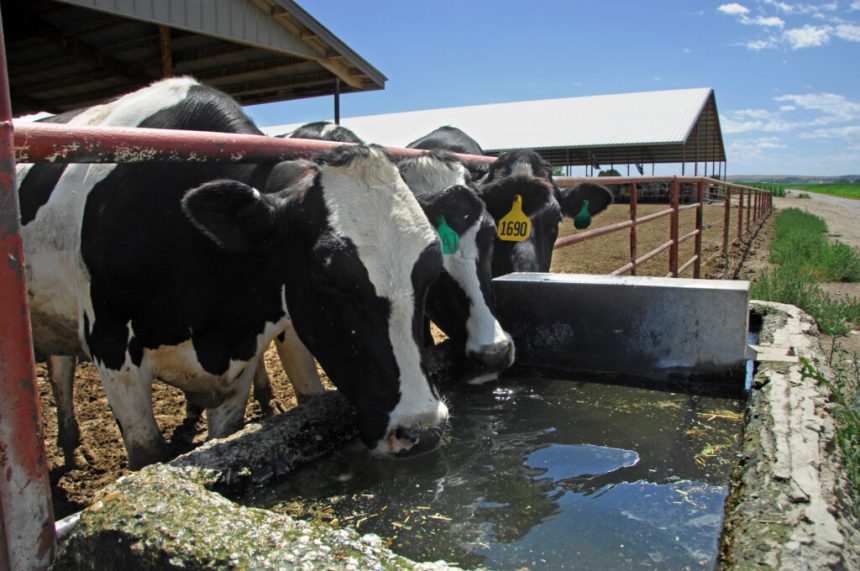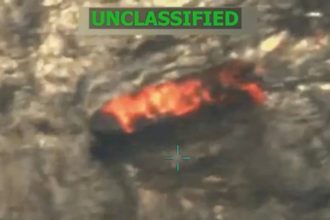New Mexico is seeking to retain and recruit additional veterinarians for cows and other food animals through a loan repayment program. (Photo by Kirsten Strough/USDA)
A shortage in rural veterinary care for big animals across New Mexico raises the risk for animal disease outbreaks and food safety threats according to agriculture officials, but the state is hoping to take the sting out of carrying hundreds of thousands in school loans to try to shore up the workforce.
The state higher education department is putting the call out to veterinarians with bovine, porcine or poultry patients to apply for up to $80,000 for veterinary loan repayments, in exchange for four years of work in New Mexico.
“Many New Mexicans, especially in rural areas, lack access to veterinary care,” Higher Education Secretary Stephanie Rodriguez said in a statement. “This program helps fill that gap while supporting livestock health, food production, and rural communities statewide.”
The program comes via Senate Bill 8, passed by lawmakers and signed by Gov. Michelle Lujan Grisham earlier this year. The law provides $1.55 million for the state’s higher education department to offer debt relief directly to veterinarians who practice on livestock animals. On average, the cost of attending school often totals $200,000 or more, according to a fiscal analysis report.
“We’re expected to award 10 veterinarians for the program in the first year,” Higher Education Communications Director Auriella Ortiz told Source NM. Ortiz said the department would request additional funding to add new awards in coming years. Applications for 2025 will be accepted through Nov. 1.
Ortiz said that 15 counties are considered “in need of food animal veterinarian care,” by the committee reviewing the applications. Those include the counties of Bernalillo, Catron, Chaves, Cibola, Doña Ana, Grant, Hidalgo, Lea, Luna, McKinley, Rio Arriba, Sandoval, San Juan, San Miguel and the northern portion of Santa Fe.
Samantha Holeck, the New Mexico state veterinarian, told Source NM in a phone call the program is needed to retain and recruit people to do the work of examining cows, sheep and pigs — noting that it’s often smaller salaries, long hours and commutes compared to veterinarian work in cities.
“If you’re working in a rural community, a 30 to 40 hour workweek, that’s not realistic,” Holeck said. “You’re going to be working long hours and you’re gonna be taking emergencies and you just can’t generate the type of income that a corporate practice would make.”
In reports to lawmakers during the January session, the New Mexico Department of Agriculture wrote the “shortage heightens concerns for a number of risks, including food safety threats, animal disease outbreaks, the potential risk of zoonotic diseases, and decreasing rural economic growth,” and noted the emergence of avian influenza in dairy cows for the first time.
Holeck said there’s no prohibition on the type of animals the vets treat, but noted a percentage of what they do needs to be food-animal oriented.
“If they’re in a rural community, for example, where they’re the only veterinarian they don’t have to turn away the dogs, cats and horses,” Holeck said. “They just need to demonstrate that they are providing a service to those livestock animals in that area.”
SUBSCRIBE: GET THE MORNING HEADLINES DELIVERED TO YOUR INBOX









